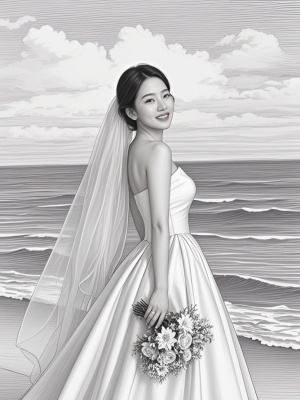The Power of Lines in a Picture: Composition, Emotion, and Storytelling
Introduction: The Fundamental Role of Lines in Visual Art
Lines in a picture are among the most fundamental elements of visual composition, serving as the building blocks that guide the viewer's eye and shape the overall aesthetic. Whether in photography, painting, or digital art, understanding how to use lines effectively can transform an ordinary image into a compelling masterpiece. This article explores the various types of lines, their psychological impact, and practical techniques for leveraging them in your creative work.
For photographers and artists looking to enhance their skills, mastering the use of lines is essential. From leading lines that draw attention to the subject to implied lines that create movement, these elements play a crucial role in visual storytelling. If you're interested in learning more about composition techniques, check out our AI Art Guide for additional insights.

The Different Types of Lines and Their Functions
1. Leading Lines: Directing the Viewer's Gaze
Leading lines are perhaps the most powerful type of lines in a picture. These are actual or implied lines that guide the viewer's eye toward the main subject or through the composition. Common examples include:

- Roads or pathways winding through a landscape
- Railway tracks converging in the distance
- Architectural elements like hallways or bridges
Research shows that viewers typically follow these lines unconsciously, making them an excellent tool for controlling how your audience experiences your image. For landscape photography inspiration, visit our Landscape Scenes gallery.
2. Horizontal, Vertical, and Diagonal Lines
Different line orientations create distinct emotional responses:

- Horizontal lines suggest stability and calm (think horizons or lying figures)
- Vertical lines convey strength and growth (like skyscrapers or trees)
- Diagonal lines create dynamism and tension (often used in action shots)
The Psychology of Lines: How They Affect Viewer Emotion
Lines in a picture do more than organize space—they evoke specific emotional responses. Curved lines often feel natural and soothing, while jagged lines can create unease or excitement. This psychological impact makes lines a powerful tool for visual storytelling.
According to a study published in the Journal of Vision, viewers process linear elements in images before recognizing subjects or colors, making them crucial for first impressions. For more on creating emotional impact in portraits, see our Portrait to Art Detail guide.
Practical Applications: Using Lines in Different Genres
1. Portrait Photography
In portraits, lines can frame the subject or emphasize facial features. Common techniques include:
- Using the jawline as a leading line to the eyes
- Incorporating architectural elements to frame the subject
- Arranging limbs to create implied lines that guide the viewer
2. Landscape and Architecture
These genres heavily rely on lines for structure and depth. The rule of thirds often intersects with natural lines in the environment to create balanced compositions.
Advanced Techniques: Breaking the Rules Creatively
While understanding conventional uses of lines is important, some of the most striking images come from creatively breaking these rules. Techniques include:
- Purposely creating tension with conflicting lines
- Using broken or interrupted lines to suggest mystery
- Experimenting with unconventional perspectives that distort lines
Conclusion: Mastering Lines for Powerful Visual Communication
Lines in a picture are far more than simple visual elements—they're powerful tools for composition, emotion, and storytelling. By understanding their types, psychological impacts, and practical applications, artists and photographers can significantly enhance their visual communication.
Whether you're capturing wedding moments or creating abstract art, thoughtful use of lines will elevate your work. Remember that while rules provide helpful guidelines, the most memorable images often come from creative experimentation with these fundamental elements.
For further reading on composition techniques, we recommend the Museum of Modern Art's guide to line in visual art, an excellent external resource on this topic.